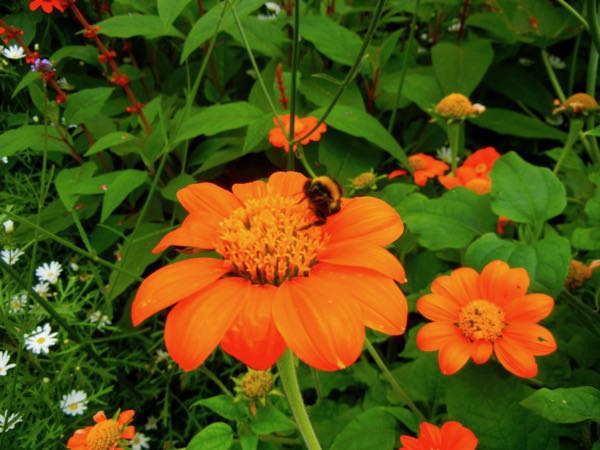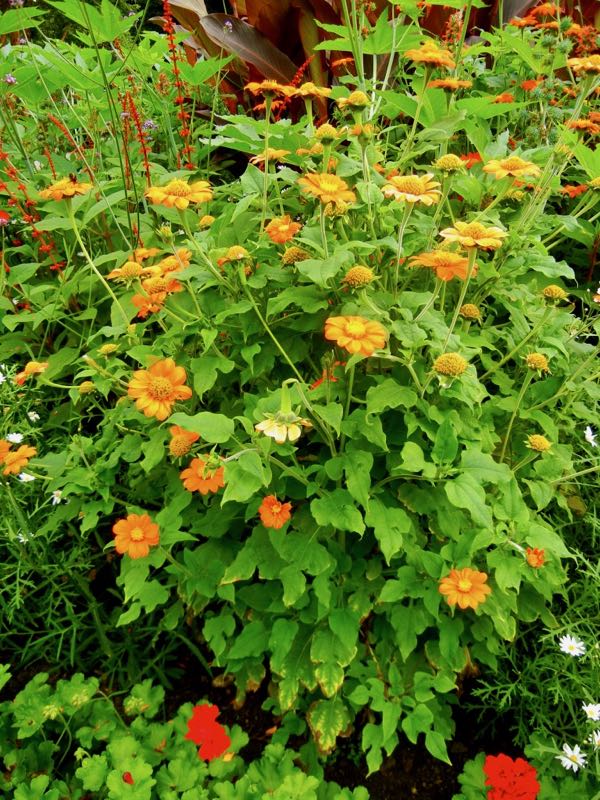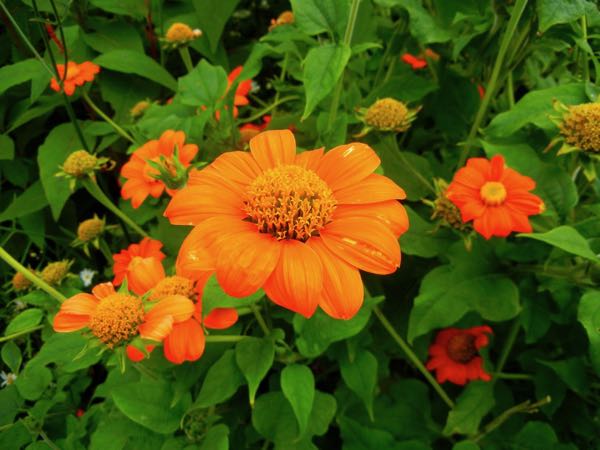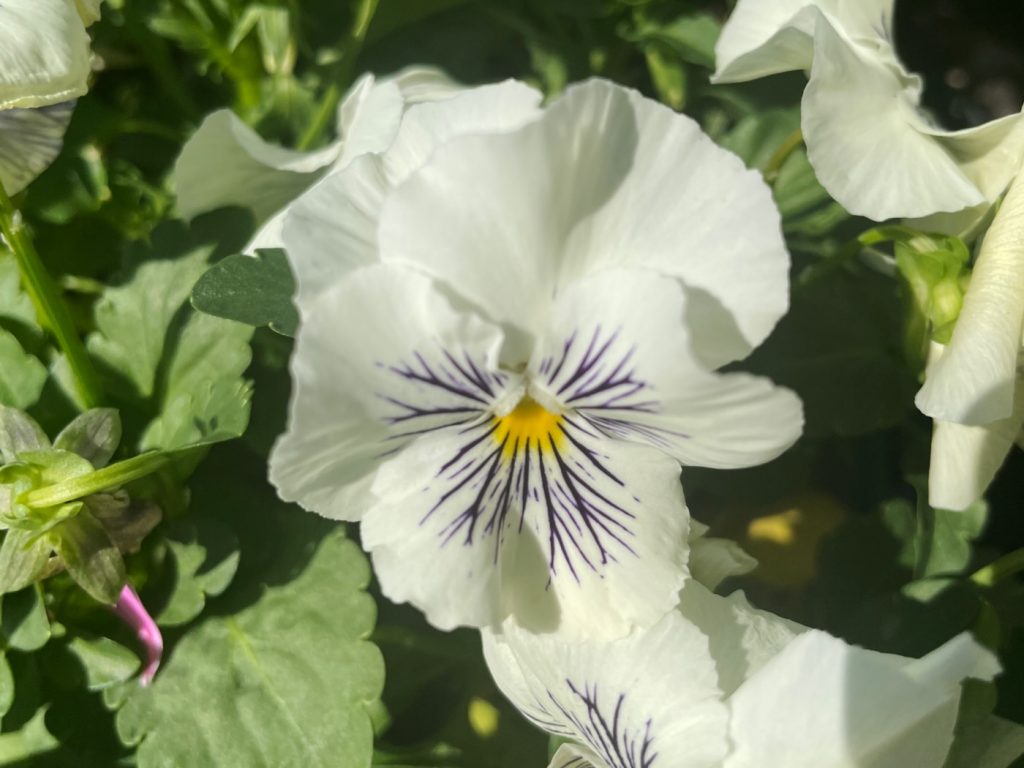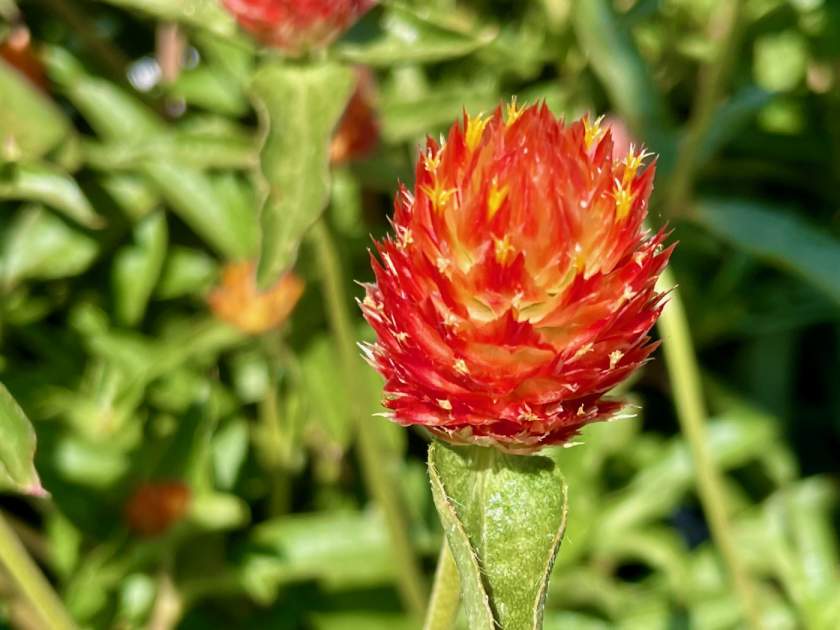Tithonia rotundifolia is also known as the Red Sunflower or Mexican Sunflower. It is part of the Asteraceae family of plants. It is native to North America.
Tithonia rotundifolia: The Radiant Red Sunflower
Tithonia rotundifolia, commonly known as the Red Sunflower or Mexican Sunflower, belongs to the Asteraceae family of plants. It is native to North America and has captivated gardeners with its vibrant blooms and robust growth.
Characteristics and Description
Tithonia rotundifolia is a vigorous, warm-season annual that showcases a somewhat gangly branching habit. It typically reaches a height of 4-6+ feet, with a large central stalk. The stems may be brittle, so care should be taken to avoid breakage. The dark green leaves are ovate to deltoid (triangular) in shape and feature serrate to crenate margins. While usually entire, the leaves may occasionally have three lobes. Both the foliage and stems are covered with a soft, downy fuzz, and the undersides of the leaves are hairy.
Flowers and Fragrance
Tithonia rotundifolia produces striking, bright orange flowers with yellow centers. The flowers, measuring around 3 inches, consist of numerous bright red to orange ray flowers surrounding central yellow disk flowers. These vibrant blooms attract a wide variety of bees, butterflies, and hummingbirds, making it a valuable addition to pollinator-friendly gardens. The flowers are also suitable for use as cut flowers, adding a burst of color to floral arrangements. Deadheading spent flowers encourages prolonged blooming.
Flowering Season
The flowering season of Tithonia rotundifolia begins in mid-summer and continues until frost arrives. This extended bloom period ensures a vibrant display of color throughout the warmer months.
Cultivation of Tithonia rotundifolia:
To cultivate Tithonia rotundifolia successfully and encourage its optimal growth, consider the following cultivation requirements:
Sunlight: This species thrives in full sun, requiring at least six hours of direct sunlight daily. Ensure the plant receives ample sunlight to promote healthy growth and abundant flowering.
Watering: Tithonia rotundifolia is drought-tolerant once established, making it suitable for xeriscaping or low-water gardens. However, regular watering during dry spells is beneficial, particularly during the early stages of growth. Provide deep, infrequent waterings to encourage the development of a robust root system.
Soil: This plant thrives in moderately fertile, well-drained soil. While it can tolerate poor soils, avoid excessively rich soil or heavy fertilization, as it may result in weak stems and excessive foliage growth. The plant prefers a soil pH ranging from neutral to slightly acidic.
Pests and Diseases: Tithonia rotundifolia is generally resistant to pests and diseases. However, keep an eye out for slugs and snails, especially when the plant is young. Implement appropriate pest control measures if necessary.
Propagation:
Propagate Tithonia rotundifolia from seeds, either by directly sowing them in the garden after the last frost or starting them indoors 6-8 weeks prior to the average last frost date for earlier blooms. Sow the seeds shallowly, as they require light for germination. Space the plants about two feet apart to provide support for adjacent plants or stake individual plants 3-4 feet apart. Given their tall and brittle stems, provide shelter from strong winds or use stakes for support.
Pruning: After the flowering season is complete, cut back the plant to maintain its shape and promote bushier growth. Pruning also helps prepare the plant for future growth cycles.
With its captivating red blooms, Tithonia rotundifolia adds a touch of vibrant beauty to gardens and landscapes. Embracing its unique growth habits and meeting its specific cultivation requirements will ensure a rewarding gardening experience with this delightful annual sunflower.
